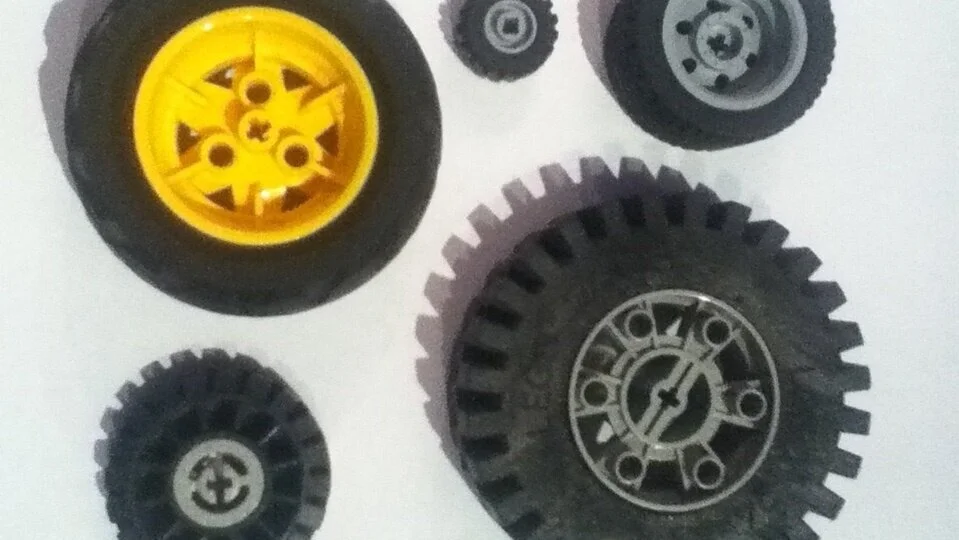10 Random Tire Facts.
They’re black, round, and made of rubber. When it comes to tires, there isn’t a lot to know, right? Wrong. The world of tires is surprisingly complex and interesting. We decided to gather some of the most interesting tire facts and list them here for your knowledge.
1. The world’s largest tire manufacturer is also the smallest.
Lego is known for providing fun and entertainment to the children of the world. While they are known for making colorful interlocking blocks, they also make tires to create model cars out of the bricks. These little black circles are cranked out to the tune of 306 million tires a year!
2. Tires used to be white!
We all remember seeing the old-fashioned white wall tires, but did you know the first rubber tires were all white. Rubber is a naturally a white substance, and when they started making tires they were white as well. It wasn’t until manufacturers started adding carbon black to strengthen tires that they got their iconic black color.
3. 1961 was the year the tire was lit.
In 1961 Goodyear tried making illuminated tires. They used glass incandescent light to give the tires a glow. For a few obvious reasons these never took off and were only seen on the show circuit.
4. Reduce, Reuse, Retire
Mulch, running tracks, roads, and tires: what could they all have in common? They can all be made from recycled tires! Tires are notoriously difficult to dispose of, and can create an entire number of ecological issues if they aren’t properly. Thankfully due to continuously emerging technology, tires can be reused to minimize their impact on the environment.
5. They couldn’t spare the spare.
Many car manufactures have ditched the spare to shed on the weight of the car, keeping the car more ecologically friendly. According to AAA more than 28% of new cars have ditched the spare. So, you don’t end up stranded on the side of the road, they have started including air compressors and a gel that will temporarily fill the hole to get you safely to your destination.
6. 18-Wheelers in space.
The tires designed by NASA for the space shuttles are the same size as an 18-wheeler, however they are engineered with a speed rating of 290 mph. Oh, yeah… did we mention they go to space?!
7. Tires and beer have something in common.
Tires and most* beer have one thing in common… a born-on date. Both tires and beer are best consumed within a certain timeframe after their conception. For tires, it’s three years. Tires do age. They get hard, brittle, and lose their effectiveness. To combat the damage of time, learn how to properly store your tires.
8. Airless tires, are more than just a pipe dream.
Do you ever just dream about the days where you’ll never have to fix a flat again? No…? Weird, anyway Michelin and a few other brands have been working on a tire that involves a rubber-compound honeycomb inside of the tire to provide the support your tire needs from air, without the air.
9. Speed comes at a price… a hefty one.
Michelin develops one of the most expensive tires on the market. The tire is engineered to run on the Bugatti Veyron Super Sport to handle its insane 258 top speed. These tires go for $54,289 a set! Then again, if you are spending $2 million on your car, $54,289 is a drop in the bucket.
10. A frugal trend.
Back in the early 1900’s a tire manufacture, Vogue tires, decided only to add the zinc oxide (carbon black) to the tread of the tire to save on money. This left the sidewall white. This look caught on with many manufacturers and created a trend that lasted decades.
Who knew tires could be so surprisingly interesting? The world of tires is chalk full secrets and surprises if you know where to look for them. From proprietary compounds, to straight-up bizarre facts the tire will always shock and entertain. Keep checking out Rethink Your Rubber to see what other quirky facts we’ll write about next.


